My circuit chart for flashlight parallel circuit, voltage regulator, and switch.
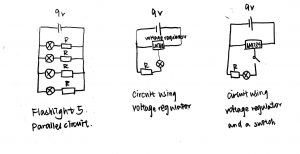
The first one:
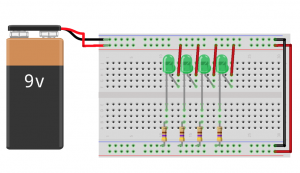
The second one:
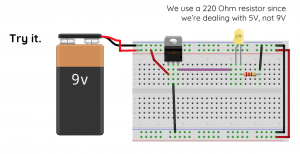
The third one:

My circuit chart for flashlight parallel circuit, voltage regulator, and switch.

The first one:

The second one:

The third one:

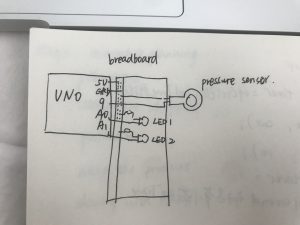
I use the pressure sensor to control two LEDs.
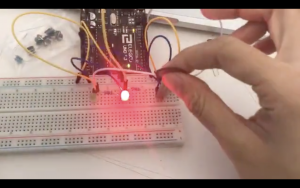
Video link: https://vimeo.com/128600307
Project description from the site:
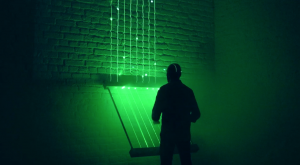
A laser harp reimagined as a controller for an interactive audiovisual experience.
An installation that merges a futuristic musical instrument with a videogame.
Distract the beams and hit geometric objects to invoke hypnotizing chain reactions of light and sound, or just admire the experience of literally touching photons.
With “Klanglichter” you can now experience what you dreamt of in the 80s…
Made with Unity, Arduino and LOVE in the Cologne Game Lab by Tobias Kreter and Onat Hekimoglu
Shot on Blackmagic Pocket Cinema Camera with BMPCC Speedbooster and Contax Zeiss 28mm
How it works,
Using hands to interrupt the laser light from laser sensors, which triggers the visual and sound effects built in Unity.
Why I like it:
Because it explores the possibility of combining arduino with other source of platform, in this case Unity, which provides me much wider possibility and imagination in terms of the application of Arduino in projects. This also provides me with inspirations of how to build projects into a larger scales without wires and sensors heavily involved and displayed. Making a good or a smart use of one type of sensor, then you are good to go.
1. 2nd Iteration of My Prototype
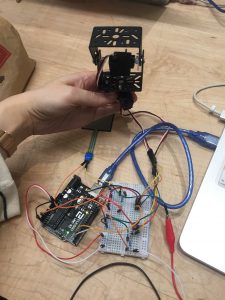
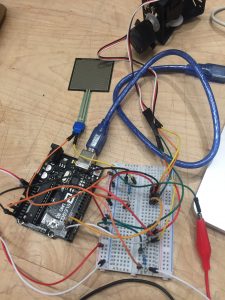
2. Your playtesting plan and desired feedback
Who will you playtest with?
I will playtest with my fellow peers from Design & Technology program and possibly some other same age peers from different programs in Parsons.
How will you get their consent?
I will ask them if they are willing to test out a quick interaction and give me some feedback.
What feedback do you want?
I want the interaction of my model doll dog to be intuitive so I know where to exactly design my pressure sensor on my model dog.
What questions will you ask?
What is the first intuitive response of placing your hand at (on my model doll dog)?
Where do you think you can press to activate music?
What information do they need to know before starting?
I will give them a basic overview of my concept.
How much will you help them during the test?
Aside from trying to give them a basic overview, I will try to let them figure out themselves. If they really need help, I will give them hints.
How will you debrief them?
I will let them know what I’m really testing orally and ask them if they have any questions.
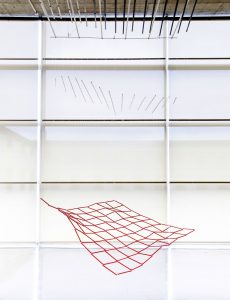
Gunnar Knechtel Photography
Most of David Bowen’s projects focus on the recurrence of natural elements. Tele-present water is gathering real-time data from a remote unknown location somewhere in Pacific Ocean and transmitting valid data (intensity and frequency of the water wave) to this installation. As described on the website “This work physically replicates a remote experience and makes observation of the activity of an isolated object, otherwise lost at sea, possible through direct communication.”
My interest has been aroused while taking a different perspective. I found it sarcastic of the form choice. He is using the mechanical grid structure to represent a natural phenomenon and deliver loneliness and helplessness to its audience. Why a obviously unnatural structure rather than a replicant of natural water waves? Why in a museum with all the unnatural surrounddings? Is it a parody to the mechanized world?
“Nemore” is a garden, consiting of 36 bendable graphite poles. “Nemore” senses the visitor. Each pole has a behavior and reacts to it’s neighbours only: and to the visitor, of course – the visitor acts an “alien neighbour”. We are interested in the question: Does a system arise from the poles behaviour, that we (the observers and the visitor) perceive as angst, curiosity, nervousness, etc.? Each pole has a distinct sound, that builds up a chord, fluctuating in resonance with the movement of the poles.
Max Kickinger describes the setup : “The poles are driven by two servo motors – one rotates the pole, the other one pulls up a coil with a fishing line attached, bending the pole. The garden is controlled by six arduino mega, a computer runs vvvv for the server application and pd for the sound. Sound works as simple additive synthesis made out of 36 sine oscillators. No sound is played, when the garden is in the “center-position” – only the irritation of the poles generates a modulation of pitch and amplitude : the wider the bending of the pole – the louder the according oscillator will sound. Pitch works in either way – up and down.

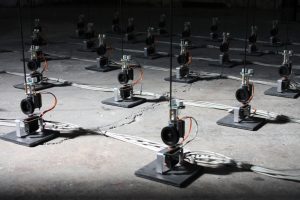
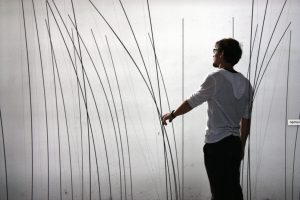
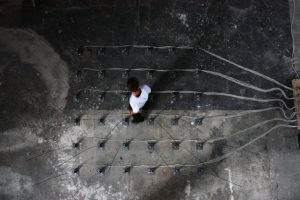
 This art piece contains physical computing mechanism using movement sensor (ultrasonic? thermal detector?) to make servo motors rotate and bend the poles. In addition, each pole has a oscillator generating sounds according to the poles are bending. I am interested in sound and how its resonance affects to the space according to human interaction. Also I have an idea that “awakening our hearing sensor,” which is creating a new communication tool using variety of pitches and rhythms instead of language we are too accustomed to as much as we can easily hide or deceive our authentic feelings. I assume this “Nemore” project can be a brilliant technical precedence for my future project.
This art piece contains physical computing mechanism using movement sensor (ultrasonic? thermal detector?) to make servo motors rotate and bend the poles. In addition, each pole has a oscillator generating sounds according to the poles are bending. I am interested in sound and how its resonance affects to the space according to human interaction. Also I have an idea that “awakening our hearing sensor,” which is creating a new communication tool using variety of pitches and rhythms instead of language we are too accustomed to as much as we can easily hide or deceive our authentic feelings. I assume this “Nemore” project can be a brilliant technical precedence for my future project.
Created by “Fishing for Compliments” : Jan Bernstein, Max Kickinger, Woeishi Lean, Sebastian Neitsch
This project is six years old, but I only just saw it for the first time. Still feels relevant. I clicked for the catchy name. I stayed for the hardware talk. Once I heard “video experimenter shield,” I was hooked. My knowledge of PComp is so limited, that this whole concept of shields is new to me.
This example showcases a video shield made by Nootropic Design. The shield allows you to feed the video signal from cable box to Arduino, which parses the closed captioning transcript for keywords. When a keyword is detected, the Arduino mutes the TV for 30 seconds via an IR sensor.
As Matt Richardson explains in the video, a world of possibility opens up when you turn your Arduino into an infrared remote control. It’s such a simple mechanism, but when used as a form of censorship or commentary, it has some real potential. Here it facilitated a conversation between cable box, Arduino, and TV, and between passive consumer/active producer by extension.
I also like that this project is explained well in the video. I feel like I could replicate this and then tweak with my own ideas.
This was one of the first projects that inspired me to find the interesting intersection and the infinite results between the analog and the new technologies. The Kinetic Sculpture: THE SHAPES OF THINGS TO COME (2008), is an installation designed for the BMW museum in Munich by Art + COM where the history of BMW is shown by animating the iconic forms of the cars. BMW’s brand recognition is given by the car silhouettes, and the sculpture efficiently highlights the pure values of BMW design and brand history.
The sculpture integrates good design, great story / concept, simplicity in the result and technical complexity (electronics + mechanics + code). This is an equation that makes an object, sculpture, experience successful.
Technical details: six-square-meters area and 714 metal spheres are suspended from the ceiling.
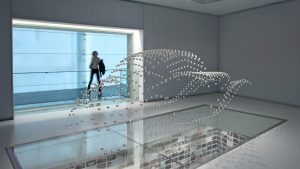
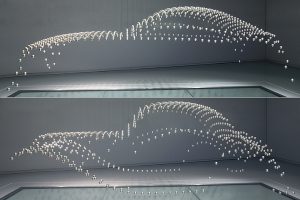
In the words of the designers: “The theme of the installation is the form-finding process in car design, which is performed in a seven-minute choreographed sequence: at the beginning the installation is in a chaotic state. No form or design idea has yet been found. The spheres move individually creating an impression of spatial white noise. Slowly the first geometric forms emerge, loosely relating to the contours of the vehicle that appear later.”
I found this interactive installation done by Arduino very interesting. It consists of 27 luminous spheres and will light up differently. I don’t completely understand the technology used in this project yet. But seeing the final effect, I feel that it can be used in many fields such as installation art and stage settings. Also, I’m imaging that if we change the output into something not only physical but also digital, the outcome will be more fun.
The Eyewriter
One of the first projects that I encountered after coming to DT was the Eyewriter. It uses a low-cost eye-tracking system and open-source software to allow people suffering from any kind of neuromuscular syndrome to draw by tracking their eye movement and translating it into lines on the screen. This project reminds me of the immense potential of creative computation- the ability to make a difference in people’s lives. This work embodies the spirit of design and technology- one built on collaboration and knowledge sharing, made possible through open source platforms and the DIY maker culture.

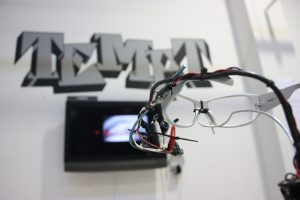
Rain Room
Another project I would like to share is Random International’s Rain Room, an immersive interactive environment, with perpetually falling rain, that ceases when a human body is in proximity. I love the simplicity of the interaction- basic sensors are used to create a truly awe-inspiring experience. The environment is an amalgam of natural and artificial, chaos and stillness, art and science.